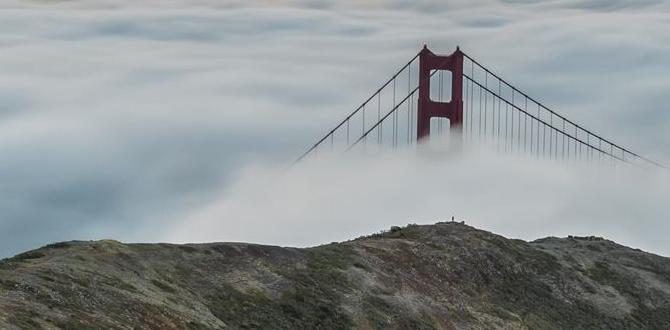Your Agra shoulder season trip plan offers milder weather and fewer crowds, making it ideal for comfortably exploring the Taj Mahal and other historical sites. This guide provides essential tips for packing, itinerary planning, and enjoying a more relaxed visit.
Planning a trip to Agra can feel a bit daunting, especially when you’re aiming for those sweet spots between peak tourist seasons. Many travelers worry about extreme weather or navigating through masses of people. But what if I told you there’s a perfect time that balances pleasant weather with a more peaceful experience?
Surviving and thriving during your Agra adventure is all about smart planning. This guide is designed to help you craft your perfect Agra shoulder season trip plan, ensuring comfort, ease, and unforgettable memories. Let’s dive into making your journey smooth and stress-free!
What is Agra’s Shoulder Season?
Agra’s shoulder seasons are the periods just before and after the peak tourist months. Typically, these fall between:
- July to September (Monsoon Season Transition): While technically part of the monsoon, the heaviest rains often recede by late September. This period offers lush greenery and potentially lower prices, though you should be prepared for occasional rain.
- February to March (Spring Transition): This is the period after the cool winter months and before the intense heat of summer. The weather is generally pleasant, making it perfect for exploring.
- October to November (Autumn Transition): Following the monsoon, the weather becomes clear, sunny, and comfortably warm, making it a highly sought-after time to visit.
These shoulder seasons are fantastic because they often present a more authentic and relaxed experience of Agra compared to the bustling peak times of December and January or the sweltering months of April to June.
Why Choose Agra’s Shoulder Season?
Opting for Agra’s shoulder season comes with a host of benefits that can significantly enhance your travel experience. It’s all about finding that sweet spot where comfort meets convenience.
Benefits of Traveling During Shoulder Season:
- Pleasant Weather: Experience milder temperatures that are ideal for sightseeing. You can explore the majestic forts and palaces without the biting cold of winter or the scorching heat of summer.
- Fewer Crowds: Enjoy a more intimate experience at iconic sites like the Taj Mahal and Agra Fort. Imagine taking photos without constantly jostling for space or waiting in long queues.
- Lower Prices: Flights and accommodation often come at more affordable rates during these transitional periods, allowing your travel budget to stretch further.
- Greener Landscapes: Especially after the monsoon (October-November), the surrounding areas are often lush and vibrant, offering beautiful scenery.
- More Local Interaction: With fewer tourists, you have a better chance to connect with locals and experience the authentic culture of Agra.
For travelers seeking comfort and a less rushed experience, the shoulder season is undeniably the way to go. It allows you to truly soak in the grandeur of Agra without feeling overwhelmed.
Essential Packing List for Agra Shoulder Season
Packing smart is key to enjoying your trip, especially during the shoulder season when weather can be a bit unpredictable. We want you to be comfortable and prepared, whether it’s a sudden shower or a pleasantly warm afternoon.
Category Breakdown:
| Clothing | Footwear | Accessories | Health & Personal Care |
|---|---|---|---|
| Lightweight, breathable fabrics (cotton, linen) | Comfortable walking shoes (sneakers, sturdy sandals) | Sun hat or cap | Sunscreen (SPF 30+) |
| Long-sleeved shirts/tops (for sun protection & modest dressing) | Sandals or flip-flops (for hotel) | Sunglasses | Hand sanitizer |
| T-shirts and tops | Optional: A pair of smarter shoes for evenings | Scarf or shawl (for sun, dust, or visiting religious sites) | Insect repellent |
| Lightweight trousers or long skirts/dresses | Socks | Small backpack or day bag | Any personal medications |
| A light jacket, cardigan, or fleece (for cooler evenings/mornings) | Reusable water bottle | Optional for comfort/convenience: Adult or child disposable briefs/diapers | |
| One slightly dressier outfit (optional) | Portable power bank | Basic first-aid kit (band-aids, antiseptic wipes) | |
| Rain jacket or umbrella (especially for July-September) | Camera and extra memory cards/batteries | Wet wipes |
A Note on Comfort and Dependability: For those who require extra security and peace of mind, especially during long travel days or while navigating new environments, consider packing adult or child disposable briefs. Brands like [mention a common, reputable brand here, e.g., Depend, Abena, or depending on region and target audience like TENA or Pampers for kids] offer discreet and absorbent options. Having these readily available can significantly reduce travel-related stress, allowing you to focus on enjoying Agra’s wonders. Ensure you pack enough for your trip duration, plus a few extra just in case.
When packing, aim for versatility. Items that can be layered are perfect for the fluctuating temperatures of Agra’s shoulder seasons. A light scarf is incredibly useful—it can shield you from the sun, protect against dust, or be worn to ensure modesty when entering religious sites.
Crafting Your Agra Shoulder Season Itinerary
A well-planned itinerary is your ticket to a smooth and enjoyable trip. During the shoulder season, you have the luxury of a more relaxed pace. Here’s how to structure your days.
Suggested 3-Day Agra Itinerary:
Day 1: The Eternal Beauty (Taj Mahal)
- Morning (Sunrise): Arrive early to witness the magical sunrise at the Taj Mahal. Shoulder season mornings can be a bit cool, so your light jacket will be handy. Aim to be there before the gates open to beat the initial rush.
- Late Morning: Explore the Taj Mahal complex. Take your time to appreciate the intricate details and history.
- Lunch: Enjoy lunch at a local restaurant near the Taj Mahal.
- Afternoon: Visit Agra Fort, the majestic red sandstone fortress that was once the main residence of the emperors of the Mughal Dynasty. It offers stunning views of the Taj Mahal.
- Evening: Relax, perhaps enjoy a traditional Mughlai dinner, and consider a cultural show if available.
Day 2: Beyond the Icons
- Morning: Explore Itmad-ud-Daulah’s Tomb, often called the “Baby Taj.” It’s a beautiful precursor to the Taj Mahal and usually less crowded.
- Late Morning: Visit the Mehtab Bagh (Moonlight Garden) across the Yamuna River for a different perspective of the Taj Mahal, especially lovely in the late afternoon light.
- Lunch: Try some local street food or a restaurant in the Sadar Bazaar area.
- Afternoon: Explore the bustling Sadar Bazaar for souvenirs, handicrafts, and local snacks.
- Evening: Consider a visit to the Kalakriti Cultural & Convention Center for a live show depicting the story of the Taj Mahal.
Day 3: Deeper Exploration or Departure
- Option A (More Sightseeing): Visit the Akbar’s Tomb at Sikandra, the final resting place of Emperor Akbar. The architecture is a unique blend of styles.
- Option B (Local Life): Explore the Kinari Bazaar, known for its textiles, jewelry, and local crafts, offering a glimpse into daily life.
- Lunch: Have your final Agra meal, savoring local delicacies.
- Afternoon: Depending on your departure schedule, do some last-minute shopping or head to the airport/train station.
This itinerary balances the must-see attractions with opportunities for deeper exploration, all at a pace suitable for the milder shoulder season weather.
Navigating Agra During Shoulder Season: Practical Tips
To make your shoulder season trip to Agra as seamless as possible, here are some practical tips. They’re designed to help you avoid common travel hiccups and maximize your enjoyment.
Key Travel Advice:
- Book in Advance: Even in the shoulder season, popular sites and accommodations can fill up. Booking your flights and hotels a few weeks to a couple of months ahead is a good idea. For the Taj Mahal, consider booking tickets online to save time. You can find official ticket information on the Archaeological Survey of India (ASI) website, which governs many historical monuments.
- Stay Hydrated: While the weather is milder, it’s still important to drink plenty of water, especially when you’re out exploring. Carry a reusable water bottle.
- Respect Local Customs: Agra is a city with rich cultural traditions. Dress modestly when visiting religious sites and be mindful of local etiquette.
- Transportation: Auto-rickshaws and cycle-rickshaws are common for short distances. For longer trips or to avoid haggling, pre-paid taxis or ride-sharing apps like Uber and Ola are available and often more comfortable.
- Food Safety: Stick to reputable restaurants and vendors. If you decide to try street food, ensure it’s freshly cooked and hot.
- Health Considerations: Always be prepared for unexpected needs. Carrying essentials like hand sanitizer, basic first-aid items, and any personal medications is crucial. For individuals or families managing incontinence, packing travel-friendly incontinence products can provide significant comfort and confidence throughout your journey. These can significantly reduce stress around long travel days or when exploring remote locations.
- Be Aware of Your Surroundings: Like any tourist destination, be mindful of your belongings and avoid displaying excessive wealth.
These tips will help you navigate Agra with confidence, allowing you to focus on the incredible sights and experiences.
What to Eat in Agra
Agra is a paradise for food lovers, offering a delicious array of Mughlai and North Indian specialties. Exploring the local cuisine is an essential part of the travel experience!
Must-Try Dishes:
- Petha: Agra’s most famous sweet. It’s a translucent soft candy made from the ash gourd. Comes in various flavors and is a must-try souvenir.
- Mughlai Cuisine: Indulge in rich dishes like Butter Chicken, Kebabs (seekh, shami), Rogan Josh, and Biryani.
- Dal Moth: A savory, crunchy snack made from lentils, a local favorite.
- Bedai: A spicy, deep-fried flatbread often served with a potato curry. Popular for breakfast.
- Lassi: A refreshing yogurt-based drink, perfect for cooling down.
When trying local food, always prioritize hygiene. Opt for busy eateries where food turnover is high, and drink bottled or purified water.
Understanding Agra’s Weather by Month (Shoulder Season Focus)
Knowing what to expect weather-wise is critical for planning your Agra shoulder season trip. Here’s a breakdown to help you pack and plan your activities accordingly.
| Month | Average Temperature (°C) | Average Temperature (°F) | Precipitation | Conditions & What to Expect |
|---|---|---|---|---|
| February | High: 27°C (81°F) Low: 12°C (54°F) |
High: 81°F Low: 54°F |
Low | Pleasantly warm days, cool evenings. Ideal for sightseeing. Flowers start blooming. |
| March | High: 34°C (93°F) Low: 18°C (64°F) |
High: 93°F Low: 64°F |
Very Low | Warming up significantly. Days can be hot, but still manageable until late afternoon. Evenings are pleasant. |
| July | High: 32°C (90°F) Low: 25°C (77°F) |
High: 90°F Low: 77°F |
High | Monsoon season continues. Humid, with moderate to heavy rainfall. Lush green scenery. Fewer tourists. |
| August | High: 31°C (88°F) Low: 25°C (77°F) |
High: 88°F Low: 77°F |
High | Similar to July. Humidity remains high. Occasional sunshine between showers. Yamuna river levels may rise. |
| September | High: 31°C (88°F) Low: 24°C (75°F) |
High: 88°F Low: 75°F |
Moderate | Monsoon begins to recede, but still potential for rain. Humidity decreases slightly. Days are warm, evenings pleasant. |
| October | High: 31°C (88°F) Low: 20°C (68°F) |
High: 88°F Low: 68°F |
Low | Post-monsoon clarity. Warm sunny days, pleasant cool evenings. Clear skies. Highly popular time. |
| November | High: 28°C (82°F) Low: 15°C (59°F) |
High: 82°F Low: 59°F |
Very Low | Cool and pleasant. Perfect weather for exploring. Comfortable temperatures throughout the day. |
Note: Temperatures are averages and can fluctuate. Always check the forecast closer to your travel date.
Frequently Asked Questions
Q1: Is Agra safe for solo female travelers during the shoulder season?
Agra is generally safe, but like any major tourist destination, it’s important to be vigilant. Traveling during the shoulder season means fewer crowds, which can enhance safety. Always dress modestly, avoid walking alone late at night in isolated areas, and be aware of your surroundings. Trust your instincts and prepare well.
Q2: Should I still book accommodation in advance for the shoulder season?
Yes, it’s highly recommended. While crowds are smaller than peak season, Agra is still a popular destination. Booking your accommodation in advance ensures you get your preferred choice of hotel or guesthouse and often at better rates. It also saves you the hassle of searching upon arrival.
Q3: What are the biggest advantages of visiting Agra in the shoulder season compared to peak season?
The main advantages are significantly fewer crowds, allowing for a more relaxed and intimate experience at sites like the Taj Mahal. The weather is also generally more pleasant and comfortable for exploring. You’ll also likely find better deals on flights and accommodation.
Q4: What kind of clothing is best for navigating Agra’s sites if I need to wear protective garments like adult or child diapers?
Opt for loose-fitting, breathable clothing made from natural fabrics like cotton or linen. Flowy trousers, skirts, and dresses work well. These fabrics allow for better air circulation, which is crucial for comfort, especially if you are wearing protective undergarments. Layering is also key; a light tunic or a long shirt over comfortable bottoms provides coverage and comfort.
Q5: What are some essential things to carry for a comfortable day of sightseeing in Agra?
For a comfortable day, carry a reusable water bottle, sunscreen, a hat, sunglasses, hand sanitizer, and any personal medications. A portable power bank for your phone is also useful. If you require extra security, having discreet adult or child disposable briefs available can ensure peace of mind throughout your active day.





